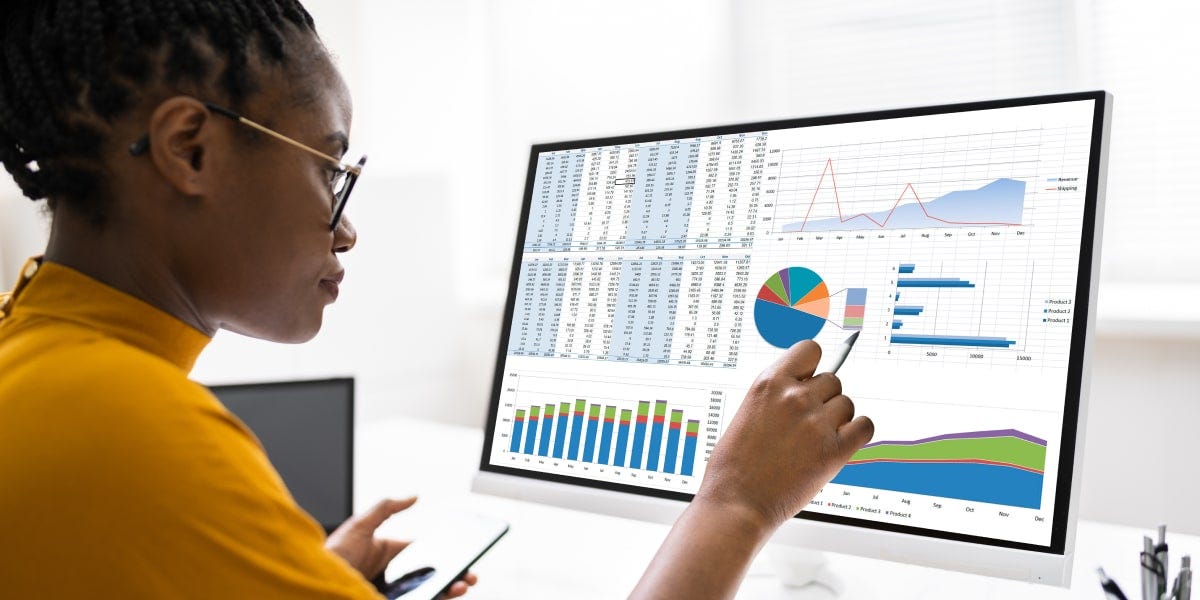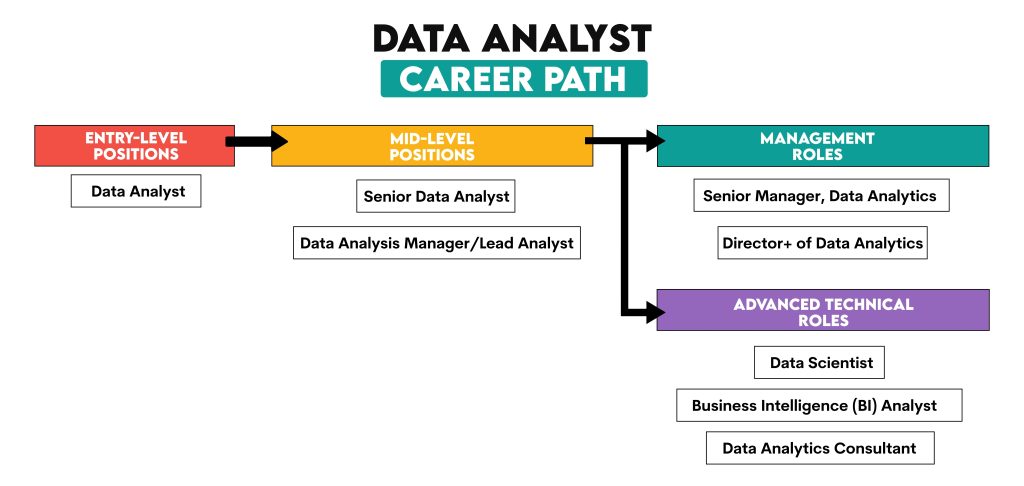
The leap from data analyst to data scientist is a natural progression for many professionals in the data field. While both roles involve working with data to extract insights, data scientists often engage in more complex analyses and model building, incorporating advanced statistical techniques and machine learning. If you’re a data analyst looking to advance your career into a data science role, this guide will provide a clear road-map to help you make this transition.

Before embarking on your journey, it’s crucial to understand the key differences between data analyst and data scientist roles:
- Data Analyst: Primarily focuses on analyzing existing data to generate reports and dashboards, identify trends, and support decision-making processes. Tools often used include Excel, SQL, and data visualization software like Tableau or Power BI.
- Data Scientist: Goes beyond data analysis to build predictive models, perform statistical analyses, and use machine learning algorithms to make data-driven predictions and recommendations. Common tools include Python, and R, machine learning libraries (like TensorFlow, and Scikit-learn), and big data technologies (like Hadoop, and Spark).
1. Strengthen Your Programming Skills
Data scientists need to have strong programming skills, particularly in languages commonly used for data science. As a data analyst, you may already have some programming experience, but it’s essential to deepen your knowledge in the following areas:
- Python: Widely used in data science for data manipulation, analysis, and machine learning. Focus on libraries such as pandas, NumPy, Matplotlib, and Seaborn.
- R: Another popular language for statistical analysis and visualization. Familiarize yourself with packages like dplyr, ggplot2, and caret.
2. Master Advanced Statistical and Mathematical Concepts
Data science involves more advanced statistical and mathematical concepts compared to data analysis. Some key areas to focus on include:
- Probability and Statistics: Understanding distributions, hypothesis testing, confidence intervals, and Bayesian statistics.
- Linear Algebra: Essential for understanding machine learning algorithms.
- Calculus: Important for optimization and understanding the mechanics of algorithms like gradient descent.
3. Gain Proficiency in Machine Learning
Machine learning is at the core of many data science roles. Start by learning the basics and gradually move on to more advanced topics:
- Supervised Learning: Techniques like linear regression, logistic regression, decision trees, and support vector machines.
- Unsupervised Learning: Techniques like k-means clustering, hierarchical clustering, and principal component analysis (PCA).
- Deep Learning: Basics of neural networks and frameworks like TensorFlow and Keras.
4. Work on Real-World Projects
Applying your knowledge to real-world projects is crucial for transitioning to a data science role. Here are some ways to gain practical experience:
- Kaggle Competitions: Participate in Kaggle competitions to solve real-world data science problems and improve your skills.
- Personal Projects: Work on projects that interest you, such as predicting stock prices, analyzing social media sentiment, or creating recommendation systems.
- Open Source Contributions: Contribute to open-source data science projects on platforms like GitHub to gain experience and showcase your skills.
5. Learn Big Data Technologies
Data scientists often work with large datasets that require specialized tools and technologies. Familiarize yourself with big data technologies such as:
- Hadoop: An open-source framework for distributed storage and processing of large datasets.
- Spark: A fast and general-purpose cluster computing system for big data processing.
- SQL and NoSQL Databases: Enhance your database skills by learning about different database management systems, including SQL and NoSQL databases like MongoDB and Cassandra.
6. Earn Relevant Certifications
Certifications can validate your skills and help you stand out in the job market. Did you know you can get world class training and a globally recognized certificate from Moringa School? Visit https://moringaschool.com/courses/data-science-course-part-time/ and learn more about the Data Science Bootcamp offered at Moringa.
7. Build a Strong Professional Network
Networking is essential for career advancement. Connect with other data scientists, join data science communities, and attend industry events. Networking can lead to job opportunities, mentorship, and collaboration on projects.
8. Prepare for Data Science Interviews
Data science interviews often include technical questions, coding challenges, and case studies. Prepare by:
- Practicing Coding Challenges: Use platforms like LeetCode, HackerRank, and CodeSignal to practice coding problems.
- Reviewing Key Concepts: Brush up on machine learning algorithms, statistical methods, and data manipulation techniques.
- Mock Interviews: Participate in mock interviews to gain confidence and receive feedback.
In conclusion, transitioning from a data analyst to a data scientist involves acquiring new skills, gaining practical experience, and continuously learning. You can get 100% support on all the steps outlined at Moringa. Could this be the ideal career path for you? Visit https://moringaschool.com/courses/data-science-course-part-time/ to learn more. The journey may be challenging, but the rewards of working on cutting-edge data science projects and making impactful data-driven decisions are well worth the effort.











